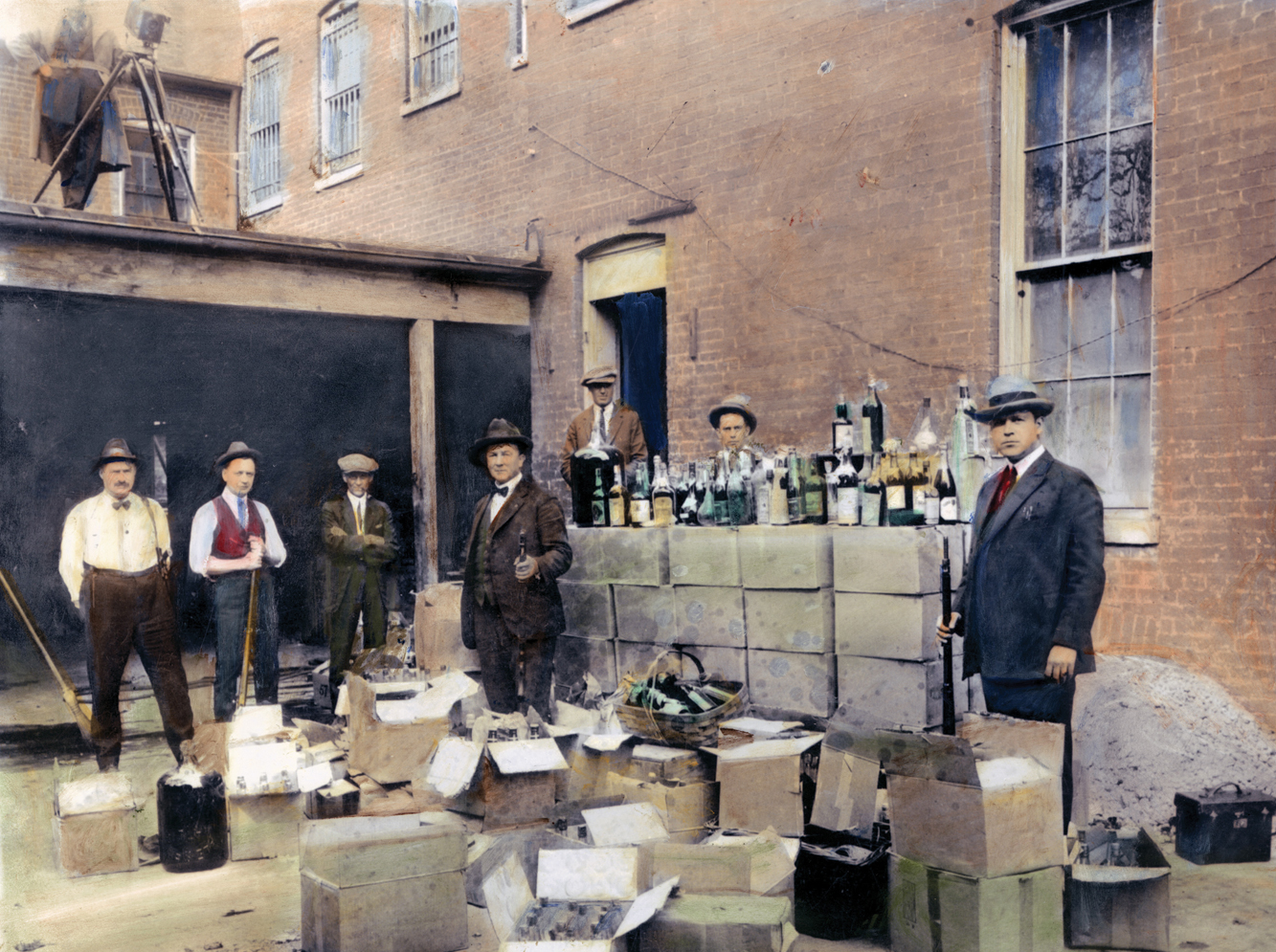Prohibition.
Printed Page 630 Chapter Chronology
Prohibition. Republicans generally sought to curb the powers of government, but the twenties witnessed a great exception to this rule when the federal government implemented one of the last reforms of the Progressive Era: the Eighteenth Amendment, which banned the manufacture and sale of alcohol and took effect in January 1920 (see chapter 22). Drying up the rivers of liquor that Americans consumed, supporters of prohibition claimed, would eliminate crime, boost production, and lift the nation's morality. Instead, prohibition initiated a fourteen-year orgy of lawbreaking unparalleled in the nation's history.
prohibition
The ban on the manufacture and sale of alcohol that went into effect in January 1920 with the Eighteenth Amendment. Prohibition proved almost impossible to enforce. By the end of the 1920s, most Americans wished it to end, and it was finally repealed in 1933.
The Treasury Department agents charged with enforcing prohibition faced a staggering task. Although they smashed more than 172,000 illegal stills in 1925 alone, loopholes in the law almost guaranteed failure. Sacramental wine was permitted, allowing fake clergy to party with bogus congregations. Farmers were allowed to ferment their own "fruit juices." Doctors and dentists could prescribe liquor for medicinal purposes.
In 1929, a Treasury agent in Indiana reported intense local resistance to enforcement of prohibition. "Conditions in most important cities very bad," he declared. "Lax and corrupt public officials great handicap ...prevalence of drinking among minor boys and the ...middle or better classes of adults." The "speakeasy," an illegal nightclub, became a common feature of the urban landscape. Speakeasies' dance floors led to the sexual integration of the formerly all-male drinking culture, changing American social life forever. Detroit, probably America's wettest city, was home to more than 20,000 illegal drinking establishments, making the alcohol business the city's second-largest industry, behind automobile manufacturing.

Eventually, serious criminals took over the liquor trade. During the first four years of prohibition, Chicago witnessed more than two hundred gang-related killings as rival mobs struggled for control of the lucrative liquor trade. The most notorious event came on St. Valentine's Day 1929, when Alphonse "Big Al" Capone's Italian-dominated mob machine-gunned seven members of a rival Irish gang. Federal authorities finally sent Capone to prison for income tax evasion. "I violate the Prohibition law — sure," he told a reporter. "Who doesn't? The only difference is, I take more chances than the man who drinks a cocktail before dinner."
Americans overwhelmingly favored the repeal of the Eighteenth Amendment. In 1931, a panel of distinguished experts reported that prohibition, which supporters had defended as "a great social and economic experiment," had failed. The social and political costs of prohibition outweighed the benefits. Prohibition fueled criminal activity, corrupted the police, demoralized the judiciary, and caused ordinary citizens to disrespect the law. In 1933, the nation ended prohibition, making the Eighteenth Amendment the only constitutional amendment to be repealed.